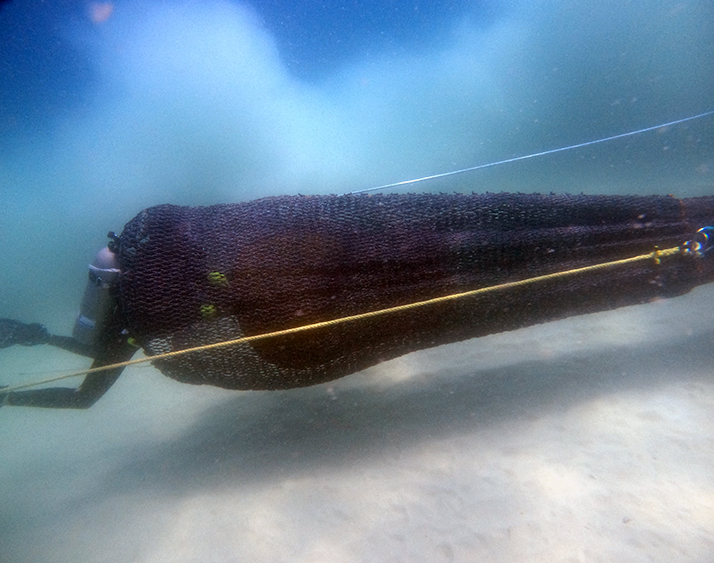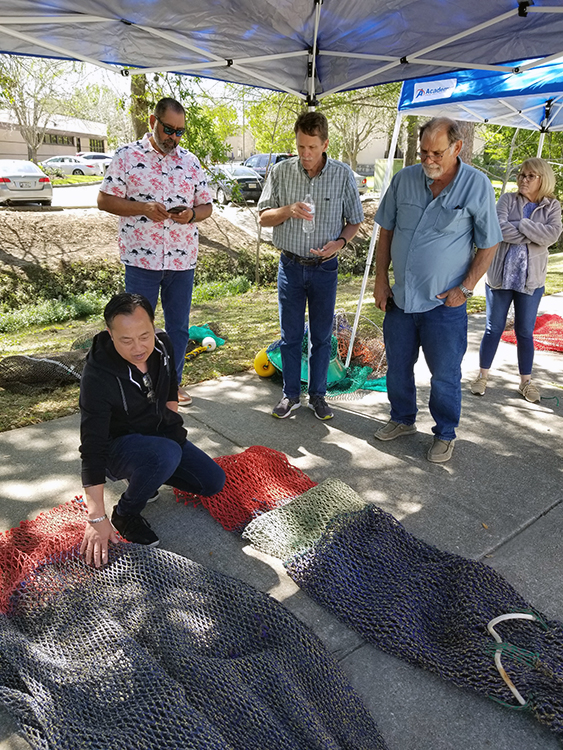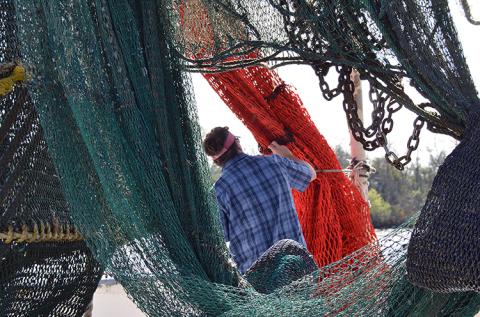To restore fish populations in the Gulf of Mexico injured by the Deepwater Horizon oil spill, a NOAA-led project is working with shrimp industry partners to select, test, and voluntarily adopt new devices with improved fish bycatch reduction capabilities.
Bycatch reduction devices are components of trawl nets that allow shrimpers to harvest their target species while simultaneously reducing the capture of non-target species. Fish species that stand to benefit include commercially, recreationally, and ecologically important fish, including juvenile red snapper, croaker, porgy, pinfish, and Gulf menhaden.
The project, Better Bycatch Reduction Devices for the Gulf of Mexico Commercial Shrimp Trawl Fishery (Better BRDs), was selected by the Open Ocean Trustee Implementation Group as part of its second restoration plan.
The NOAA Southeast Fisheries Science Center (SEFSC) is completing field testing that kicked off in Florida in June of 2022, and testing in Mississippi is currently underway. Tests compare shrimp retention and bycatch reduction in current bycatch reduction devices with the newer designs.


Bycatch reduction devices must successfully demonstrate a 30 percent reduction in total weight of finfish bycatch to be certified by NOAA Fisheries for use in the Gulf shrimp trawl fishery. Developing a device that reduces bycatch more than the current standard device will benefit Gulf fish populations impacted by the oil spill.
Two candidate bycatch reduction devices were identified for testing through dockside outreach to the Gulf shrimp fleet and personal communication with industry members. A third device for testing was identified through outreach to the Australian Northern Prawn Fishery.
These devices and others were presented to the project’s Better BRDs Stakeholder Working Group, a group of shrimp industry stakeholders, who provided feedback in a meeting with NOAA and project implementation partners, Texas Sea Grant and Louisiana Sea Grant, in April 2022.
For the next step, the NOAA project team will consider results from testing, as well as input from the Better BRDs Stakeholder Working Group to determine which BRDs move forward in development and further testing by shrimp fishers.
Learn more about the Better Bycatch Reduction Devices project, complete with data from DIVER, on the Gulf Spill Restoration website. More information on other NOAA bycatch reduction efforts is summarized at the NOAA Fisheries website.
Want to know more about Gulf Spill restoration efforts? Subscribe today to have news and updates delivered right to your inbox.


